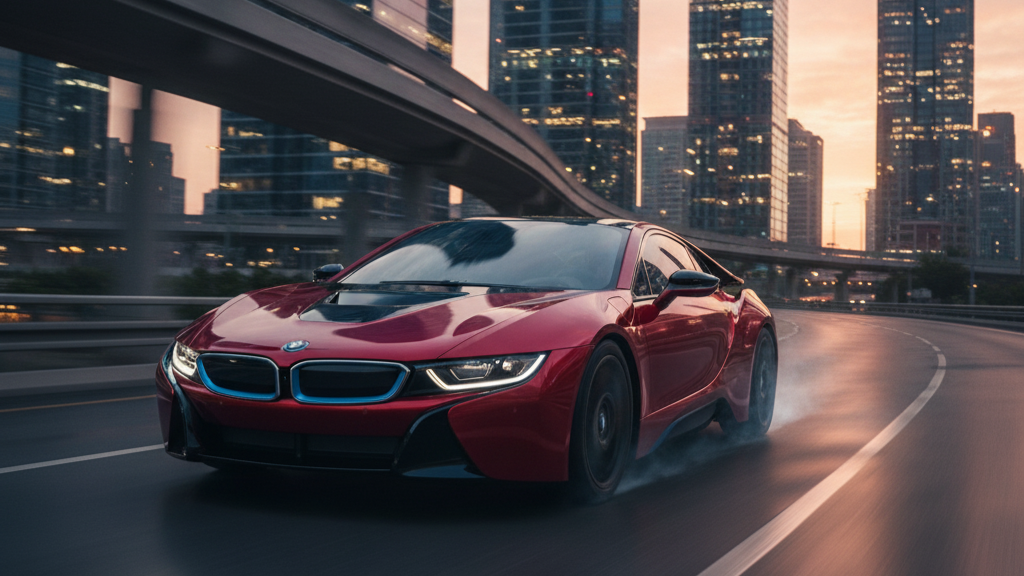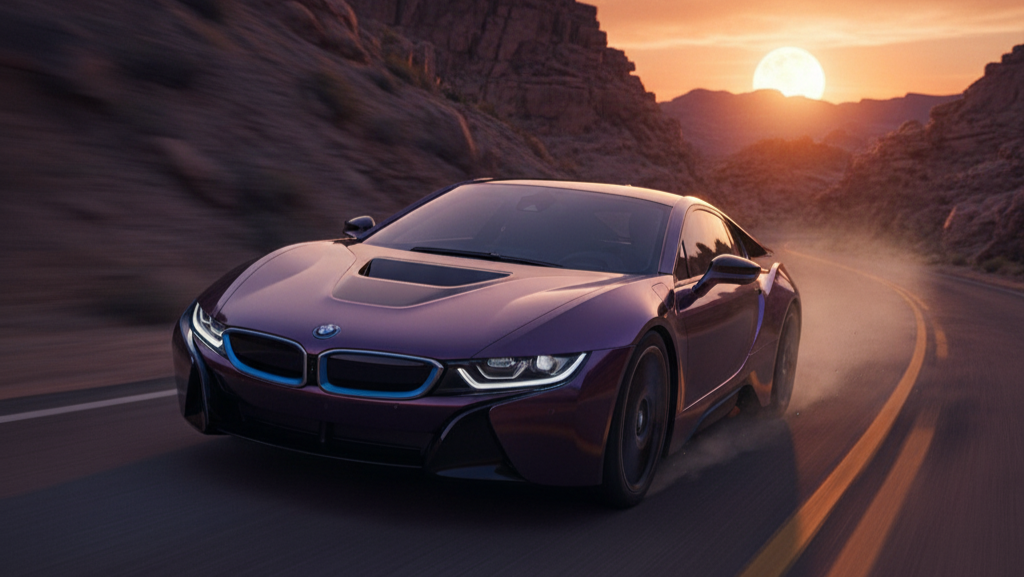BMW i8 Used Market Analysis: Depreciation Patterns & Ownership Reality
Published on: Tue Nov 12 2024
BMW i8 Used Market Analysis: Understanding the Depreciation Reality
The BMW i8 launched in 2014 as a revolutionary plug-in hybrid sports car, representing BMW’s vision of sustainable performance. With an original MSRP starting around $140,000, it was positioned as a halo car showcasing BMW’s technological prowess. However, the used market tells a different story, with many examples now available for significantly less than their original price.
Market Depreciation Overview
Initial Pricing vs. Current Values
The BMW i8 debuted with ambitious pricing that reflected its cutting-edge technology and limited production numbers. However, the used market has seen substantial depreciation:
- Original MSRP (2014-2020): $140,000 - $150,000
- Current Used Values (2024): $45,000 - $75,000
- Depreciation Rate: Approximately 50-65% over 4-6 years
Factors Driving Depreciation
1. Halo Car Economics
High-end halo cars typically suffer steep initial depreciation due to:
- Limited production volumes creating artificial scarcity pricing
- Early adopter premium that diminishes over time
- Competition from established sports car manufacturers
- Rapid technological advancement making early models appear dated
2. Hybrid System Complexity
The i8’s plug-in hybrid powertrain introduces unique depreciation factors:
- Battery degradation concerns: Lithium-ion battery packs lose capacity over time
- Specialized maintenance requirements: Fewer technicians qualified for hybrid systems
- Technology obsolescence: Rapid EV advancement makes early hybrids appear outdated
- Warranty expiration: High-voltage system repairs become owner responsibility
3. Practicality Limitations
Compared to similarly priced rivals, the i8 faces practical challenges:
- Limited cargo space: Sports car proportions restrict utility
- Two-seat configuration: No rear seats limit family use
- Charging infrastructure: Early hybrid charging was less convenient than current EVs
- Performance compromise: Neither pure sports car nor pure efficiency vehicle

Detailed Ownership Cost Analysis
Maintenance Requirements
Hybrid System Maintenance
The i8’s complex powertrain requires specialized attention:
- Battery health checks: $200-$400 annually
- High-voltage system diagnostics: $150-$300 per inspection
- Electric motor service: $500-$1,200 every 2-3 years
- Charging system maintenance: $300-$600 annually
Traditional Engine Maintenance
Despite the hybrid system, the i8 still requires conventional maintenance:
- Oil changes: $150-$250 (synthetic oil, specialized service)
- Brake service: $400-$800 (regenerative braking reduces wear but requires specialized parts)
- Tire replacement: $800-$1,200 (performance tires, staggered setup)
- Suspension components: $600-$1,500 (adaptive suspension systems)
Insurance Considerations
- Higher premiums: Sports car classification with hybrid complexity
- Specialized repair costs: Limited repair network increases claim costs
- Technology replacement: Expensive hybrid components drive up comprehensive claims
Fuel Economy Reality
While EPA ratings suggested impressive efficiency:
- EPA Combined: 76 MPGe
- Real-world highway: 35-40 MPG (gasoline only)
- Electric-only range: 15-18 miles (diminishing with age)
- Charging costs: Minimal impact on overall fuel economy

Market Segmentation Analysis
Price Ranges by Condition
Excellent Condition ($65,000-$75,000)
- Low mileage (<30,000 miles)
- Complete service history
- No accident history
- Recent battery health reports
- Original owner or enthusiast maintained
Good Condition ($50,000-$65,000)
- Moderate mileage (30,000-60,000 miles)
- Regular service history
- Minor cosmetic wear
- Some hybrid system maintenance records
- May have minor modifications
Fair Condition ($35,000-$50,000)
- Higher mileage (>60,000 miles)
- Incomplete service history
- Visible wear and tear
- Unknown hybrid system condition
- May have accident history
Regional Market Variations
- California: Higher demand due to environmental consciousness and charging infrastructure
- Northeast: Moderate demand, affected by winter driving concerns
- Southeast: Lower demand, limited charging infrastructure
- International markets: Varying demand based on EV adoption rates

Buyer’s Comprehensive Checklist
Pre-Purchase Inspection Requirements
Hybrid System Evaluation
- Battery health report: Professional diagnostic showing current capacity
- Charging system test: Verify all charging modes function properly
- Electric motor operation: Smooth acceleration without hesitation
- Regenerative braking: Proper energy recovery during deceleration
Service History Verification
- Dealer service records: Complete maintenance history
- Recall completion: All BMW recalls addressed
- Hybrid-specific maintenance: Battery conditioning, electric motor service
- Software updates: Latest BMW i8 software versions installed
Mechanical Condition Assessment
- Engine performance: Smooth operation, no unusual noises
- Transmission: Seamless shifting between electric and gasoline modes
- Suspension: Adaptive suspension functioning properly
- Brakes: Regenerative and friction braking working correctly
Ownership Preparation
Maintenance Planning
- Find qualified technicians: Locate BMW hybrid specialists in your area
- Budget for hybrid maintenance: Higher costs than conventional sports cars
- Understand warranty coverage: Know what’s covered and what isn’t
- Plan for battery replacement: Eventually required, costs $8,000-$15,000
Insurance and Registration
- Shop insurance rates: Compare providers for hybrid sports car coverage
- Understand registration requirements: Some states have hybrid-specific regulations
- Consider extended warranties: May be worthwhile for hybrid components
Long-term Ownership Considerations
Resale Value Projections
Based on current market trends:
- Continued depreciation: Likely 10-15% annually for next 2-3 years
- Technology obsolescence: Increasing as EV technology advances
- Parts availability: May become more expensive as production ends
- Collector potential: Limited due to high production numbers
Maintenance Cost Escalation
- Aging hybrid systems: Increasing repair frequency and costs
- Specialized parts: Limited aftermarket support drives up prices
- Technician scarcity: Fewer qualified hybrid mechanics over time
- Software updates: May become unavailable as BMW phases out support
Verdict: Is the Used BMW i8 Worth It?
Ideal Buyer Profile
The used BMW i8 makes sense for:
- Technology enthusiasts: Appreciate the innovative hybrid system
- Collectors: Unique design and limited production appeal
- Environmental conscious drivers: Want performance with efficiency
- Budget-conscious sports car buyers: Access to exotic design at lower cost
Red Flags to Avoid
- Unknown hybrid system condition: Expensive to diagnose and repair
- Incomplete service history: Critical for complex hybrid systems
- High mileage examples: Hybrid components wear differently than conventional cars
- Modified vehicles: Alterations can affect hybrid system operation
Final Recommendation
The BMW i8 represents a fascinating intersection of technology and design, offering unique ownership experience at a fraction of its original cost. However, prospective buyers must understand the complexity of hybrid ownership and budget accordingly for specialized maintenance.
With proper research, thorough inspection, and realistic expectations about maintenance costs, the used BMW i8 can provide satisfying ownership for the right enthusiast. The key is understanding that this isn’t a conventional sports car—it’s a technological showcase that requires specialized care and appreciation for its unique character.